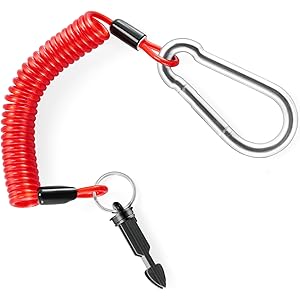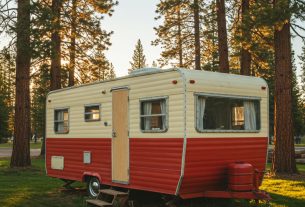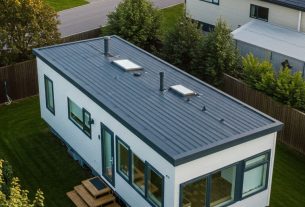When I first encountered the concept of mobile homes, I was intrigued. They represent a unique blend of affordability, mobility, and modern living. But have you ever wondered how these homes are made? In this article, I’ll take you on a comprehensive journey through the entire mobile home manufacturing process, from conception to completion. By understanding how these homes are built, we can appreciate the craftsmanship and innovation involved in creating these dwellings. So, let’s dive in!
The Rise of Mobile Homes
Before we explore the manufacturing process, let’s take a moment to understand the significance of mobile homes. The mobile home industry has evolved significantly since its inception. According to the U.S. Census Bureau, approximately 22 million Americans live in manufactured homes today. This number highlights their importance as an affordable housing solution.
Mobile homes, now more accurately referred to as manufactured homes, are built in a factory setting and then transported to their final locations. They offer a cost-effective alternative to traditional homes, allowing families to own their space without breaking the bank.
The Mobile Home Manufacturing Process
Now that we understand the importance of mobile homes, let’s delve into the manufacturing process itself. The creation of a mobile home can be broken down into several key stages:
1. Design and Planning
The journey begins with design and planning. Manufacturers work closely with architects and designers to create floor plans that maximize space and functionality. During this stage, several factors are considered:
- Size and layout of the home
- Materials to be used
- Energy efficiency considerations
- Compliance with local building codes
This phase is crucial, as it lays the foundation for the entire project. The designers aim to create a home that is not only aesthetically pleasing but also meets the needs of potential buyers.
2. Material Selection
Once the design is finalized, the next step is material selection. Manufacturers choose high-quality materials to ensure durability and longevity. Common materials include:
- Wood and engineered wood products
- Metal for structural elements
- Vinyl and fiberglass for exterior finishes
- Insulation materials for energy efficiency
Choosing the right materials is vital for the home’s performance and longevity. Manufacturers often prioritize sustainable materials that contribute to energy efficiency and minimize environmental impact.
3. Construction in the Factory
This is where the magic happens! Mobile homes are constructed in a factory setting, which allows for greater efficiency and quality control. The construction process typically includes the following stages:
3.1. Building the Frame
The first step in construction is building the frame. Using steel or wood, workers create a robust structure that will support the entire home. This frame is key to ensuring that the home can withstand transportation and the elements once it’s placed in its final location.
3.2. Adding the Walls
Next, the walls are added. Typically, the exterior walls are made from materials like vinyl or wood siding. Insulation is also installed at this stage, ensuring the home is energy-efficient and comfortable.
3.3. Installing the Roof
The roof is then constructed, often using asphalt shingles or metal roofing. This step is crucial for protecting the home from weather conditions and ensuring longevity.
3.4. Interior Finishing
Once the exterior is complete, the focus shifts to the interior. This phase involves:
- Installing drywall
- Setting up plumbing and electrical systems
- Adding cabinetry and fixtures
- Flooring installation
Each of these components is essential for creating a comfortable living environment. Quality control checks are conducted throughout the process to ensure everything meets the required standards.
4. Quality Control and Testing
Quality control is a critical aspect of mobile home manufacturing. After construction, homes undergo rigorous testing to ensure they meet safety and performance standards. This may include:
- Structural integrity assessments
- Electrical and plumbing system tests
- Energy efficiency evaluations
These checks help guarantee that the home is safe for occupancy and built to last.
5. Transportation to Site
Once the mobile home passes all quality checks, it’s time for transportation. The home is carefully loaded onto a flatbed truck and transported to its final location. This stage presents challenges, as the home must be securely fastened to prevent damage during transit.
6. Setup and Installation
Upon arrival at the destination, the mobile home is offloaded and set up. This process includes:
- Positioning the home on a foundation or piers
- Connecting utilities such as water, electricity, and sewage
- Final inspections to ensure everything is in order
Proper setup is crucial for the home’s stability and functionality. It’s essential to follow local regulations and guidelines during this phase.
Advantages of Manufactured Homes
Now that we’ve explored the manufacturing process, let’s discuss some advantages of choosing a manufactured home. Here are a few compelling reasons why they are a great option:
- Affordability: Manufactured homes are generally more affordable than traditional site-built homes, making homeownership accessible for many.
- Speed of Construction: The factory setting allows for faster construction times, meaning you can move into your new home sooner.
- Energy Efficiency: Many manufactured homes are built with energy-efficient materials, helping homeowners save on utility bills.
- Customization: Buyers often have the option to customize various aspects of their home, allowing for personalization.
- Mobility: As the name suggests, mobile homes can be relocated more easily than traditional homes, offering flexibility.
Challenges in the Mobile Home Industry
Despite the advantages, the mobile home industry faces several challenges. Understanding these challenges can provide valuable insights:
- Stigma: There can be a negative perception surrounding mobile homes, often viewed as inferior to traditional homes.
- Financing: Securing financing for manufactured homes can sometimes be more complicated than for traditional homes.
- Land Issues: Finding suitable land for placement can be challenging, particularly in urban areas.
Addressing these challenges is essential for the growth and acceptance of manufactured homes in the housing market.
Case Study: The Impact of Manufactured Homes in Affordable Housing
To illustrate the significance of manufactured homes, let’s take a look at a notable case study. In 2020, the state of California faced a housing crisis, with skyrocketing prices and an urgent need for affordable housing solutions. The state implemented policies to encourage the development of manufactured homes as a viable option for low-income families.
This initiative resulted in the construction of hundreds of new manufactured home communities, providing affordable housing to those in need. Residents reported increased stability and improved quality of life, showcasing the positive impact of manufactured homes on communities.
Conclusion
In conclusion, the process of creating a mobile home is intricate and multifaceted. From design and material selection to construction and setup, every stage is crucial in delivering a high-quality product. Manufactured homes offer numerous advantages, including affordability and energy efficiency, making them an attractive option for many families.
However, challenges remain in the industry, including stigma and financing issues. By understanding the manufacturing process and the benefits of mobile homes, we can appreciate their role in providing affordable housing solutions.
What are your thoughts on mobile homes? Have you ever lived in one or considered it as an option? I would love to hear your experiences and opinions in the comments below!
FAQs
1. Are manufactured homes safe?
Yes, manufactured homes must meet strict safety and quality standards set by the U.S. Department of Housing and Urban Development (HUD). Regular inspections ensure the safety and durability of these homes.
2. Can I get a mortgage for a manufactured home?
Yes, many lenders offer financing options for manufactured homes. However, the terms may vary compared to traditional mortgages, so it’s essential to shop around and explore your options.
3. Do manufactured homes appreciate in value?
Manufactured homes can appreciate in value, but this depends on various factors, including location, market conditions, and the quality of the home itself.
4. How long do manufactured homes last?
With proper maintenance, manufactured homes can last for several decades. Many modern manufactured homes are built with durable materials designed to withstand the test of time.
If you enjoyed this article and want to keep up with more insights on mobile homes and other topics, consider signing up for our newsletter! Don’t forget to share this article with friends and on social media!
JUSTTOP 6FT Breakaway Trailer Cable,Heavy Duty Stainless Steel Spring Towing Coiled Wire,Emergency Brake Wire Camper Safety Breakaway Cable with Pin,RV Trailer Accessories
$6.39 (as of November 15, 2025 07:52 GMT -03:00 - More infoProduct prices and availability are accurate as of the date/time indicated and are subject to change. Any price and availability information displayed on [relevant Amazon Site(s), as applicable] at the time of purchase will apply to the purchase of this product.)
Sign up for our newsletter and stay up to date with exclusive news
that can transform your routine!





